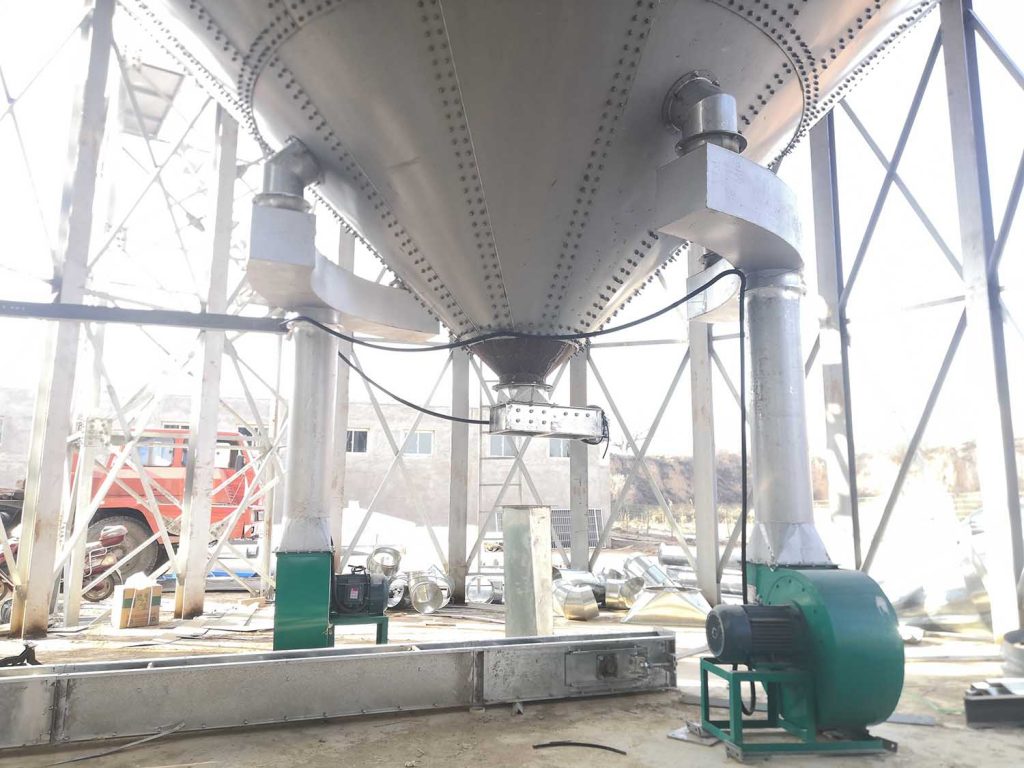A ventilation system uses scientific airflow design and smart environmental control. It effectively regulates temperature and humidity inside the silo. This prevents mold and pests while extending grain shelf life. This article explains the working principle of the system. It helps us fully understand the core mechanism of this important technology.

Basic Working Principle
Airflow Driving Mechanism
The system mainly uses fans or natural wind to drive airflow. Fans rotate to create a pressure difference. They bring fresh outside air into the silo or expel moist, hot air from inside. Natural ventilation uses wind direction and pressure differences. It enables natural air circulation inside and outside the silo.
Heat and Moisture Exchange Process
Air flowing through the grain pile exchanges heat and moisture with the grain. The grain transfers heat and moisture to the moving air through conduction and diffusion. Meanwhile, oxygen from the air penetrates the grain mass. This supports the grain's slight respiration. In this way, the system removes excess heat and moisture. It maintains temperature and humidity balance inside the silo.
System Operation Modes
Cooling Ventilation Mode
This mode aims to reduce grain temperature. It decreases grain respiration and slows the aging process. During summer heat or right after grain intake, the system introduces cooler outside air. This replaces the hot air inside the silo, lowering the overall grain temperature. Operators typically run this mode at night or during cooler periods. This ensures effective ventilation.
Drying Ventilation Mode
Drying ventilation promotes water evaporation and diffusion from the grain. It reduces grain moisture content, preventing mold and spoilage. The system introduces dry air. This absorbs and carries away moisture from the grain pile. This mode is common in high-humidity areas or after rainy seasons. It helps dry the grain quickly.
Equalization Ventilation Mode
This mode balances temperature and humidity differences inside the grain pile. It avoids localized overheating or excess moisture. Using evenly distributed ducts and ventilation covers, air circulates through the grain mass. This distributes heat and moisture evenly. The mode suits daily maintenance during long-term storage.